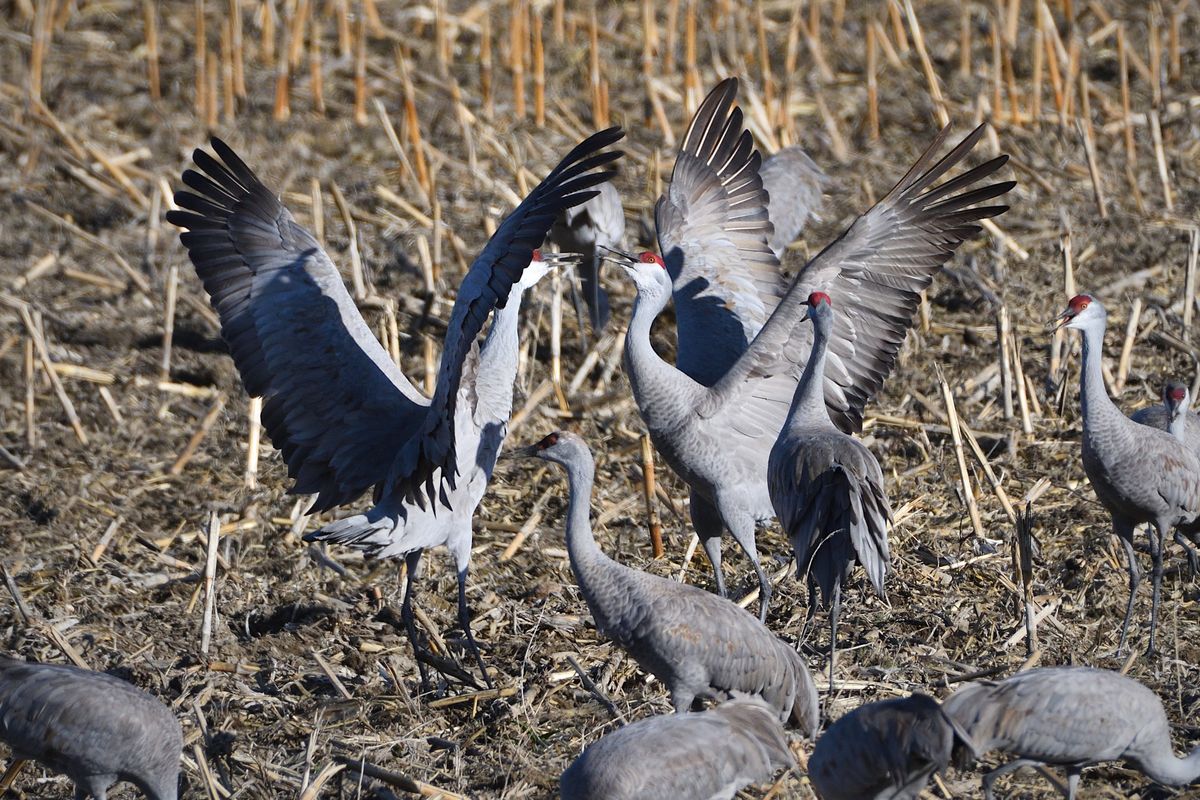‘Ridiculous’ but graceful: Thousands of sandhill cranes pass through Washington every spring

All of them, maybe a hundred or more, had their beaks buried in the corn stubble.
The cranes were foraging in a cornfield at sunset near Potholes Reservoir, 20 miles south of Moses Lake. Other than the occasional scuffle, the 4-foot birds snatched up the loose kernels quietly. When the sun fell behind the horizon, the lanky animals took off, bugling loudly as they faded into the twilight.
Sandhill cranes are a common sight in the Columbia Basin of Eastern Washington this time of year.
Some 30,000 of them make the journey from the Sacramento Valley to Alaska every spring. Many rest and recover for a few weeks on agricultural land in and around the Columbia National Wildlife Refuge, regaining their strength before continuing north on their roughly 2,000-mile journey.
The birds are so charismatic, and pass through in such great numbers, that they inspired the Sandhill Crane Festival, held during the third or fourth week of March every year in Othello, Washington.
“The more you learn about them, the more intrigued you are with them and the more respect you have for them,” said Chris Braunwart, who co-chairs the Sandhill Crane Festival’s board of directors with her husband, Kurt.
Sandhill cranes are tall and gray-brown, with scarlet red caps, long necks and spindly legs. They mate for life and can live more than 30 years. During their courtship displays, the birds make a staccato rattling sound while hopping up and down.
“They are a big bird and a bit gangly,” Kurt Braunwart said, “but when they’re flying, they’re graceful.”
Sandhill cranes didn’t always make such an epic pit stop in the Columbia Basin each spring.
Kurt Braunwart said the birds mostly flew over Eastern Washington until the 1950s, when the Columbia Basin Project created an irrigation system that allowed farmers to grow crops on the otherwise arid land.
Despite the tens of thousands of cranes that pass through, only about 100 breed in the state. While sandhill crane populations are stable throughout the country, the birds are endangered in Washington.
Jessica Stocking, the lead sandhill crane biologist for the Washington Department of Fish and Wildlife, said the state was once home to far more cranes, though it’s not clear precisely how many.
Stocking said she hopes anyone who has a chance to watch cranes as they fly through Washington seizes the opportunity.
“They’re kind of ridiculous,” she said, “and at the same time, so graceful.”